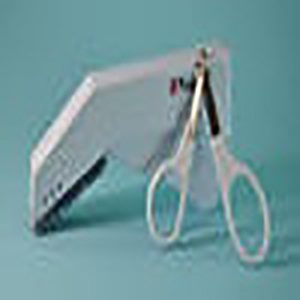The stapler is the first stapler in the world and has been used for gastrointestinal anastomosis for nearly a century. It was not until 1978 that the tubular stapler was widely used in gastrointestinal surgery. Generally divided into one-time or multiple-use staplers, imported or domestic staplers. It is a medical device to replace the traditional manual suture. Due to the development of modern technology and the improvement of manufacturing technology, the stapler currently used in clinical practice is reliable in quality, easy to use, tight and tight, especially its fast suture and easy operation. It also has the advantages of few side effects and surgical complications, and also enables the resection of unresectable tumors in the past, which is very favored and respected by clinical surgeons at home and abroad.
1. Introduction of stapler
The stapler is a medical device that replaces manual suturing. The main working principle is to use titanium staples to sever or staple tissue, similar to a stapler. According to the different scope of application, it can be mainly divided into skin stapler, digestive tract (, gastrointestinal, etc.) circular stapler, rectal stapler, [1] circular hemorrhoid stapler, circumcision stapler, vascular stapler, hernia stapler Staplers, Lung Cutting Staplers, etc.
Compared with traditional manual suturing, instrument suturing has the following advantages:
(1) The operation is simple and convenient, saving operation time.
(2) One-time use to avoid cross infection.
(3) Use titanium nails or stainless steel nails (skin stapler) to suture tightly and with moderate elasticity.
(4) Has few side effects and effectively reduces surgical complications.

2. Structural features of the stapler
The stapler includes a casing, a central rod and a push tube. The central rod is set in the push tube. The front end of the central rod is provided with a nail cover, and the rear end is connected with the adjustment knob at the end of the casing through a screw rod. The handle is movably connected with the casing through a hinge, and is characterized in that: the stapler is provided with a link mechanism, the three links are respectively connected with the excitation handle, the inner wall of the casing and the push tube, and one end of the three links is connected to the same On the living hinge; the three connecting rods of the link mechanism include a power rod, a support rod and a motion rod; the power rod and the excitation handle are hinged; the support rod and the shell are connected by a living hinge; the motion rod and the push tube are movable Hinged connection. The stapler of the utility model has the advantages of simple structure, convenient operation and strong stability.
The connecting structure of the push rod of the digestive tract stapler and the annular knife includes the push rod and the annular knife fixedly connected with the push rod. The push rod is embedded with one end of the annular knife. Because the push rod is embedded with one end of the annular knife, the concentricity between the annular knife and the push rod is high, and the annular knife can sit stably in the process of cutting tissue. In the middle, the success rate of surgery is high.
The nail pushing device of the alimentary canal stapler includes a nail cartridge body 6 and a nail pushing sheet body 1 . The ends respectively have a second guide wall 10, the first guide wall 9 and the second guide wall 10 at the same end intersect and the arc transitions at the intersection, and the first guide wall 9 and the second guide wall 10 at the same end are symmetrically arranged; When there is a slight change in the geometric size of the staple, it can also be securely seated in the hole of the staple cartridge by the action of the guide wall, so as to ensure that the width of the staple pushing piece is larger than the width of the staple crown, so that the staple is well formed.
The connection structure between the puncture cone of the digestive tract stapler and the nail base includes a nail base and a puncture cone, the nail base is fixed with a circlip, the puncture cone is inserted between the circlips, and the circlip clamps the described puncture cone. Relying on the spring clamping force of the circlip, the nail seat can be reliably connected to or separated from the puncture cone, which is safe to use and easy to install.
Post time: Feb-14-2022





